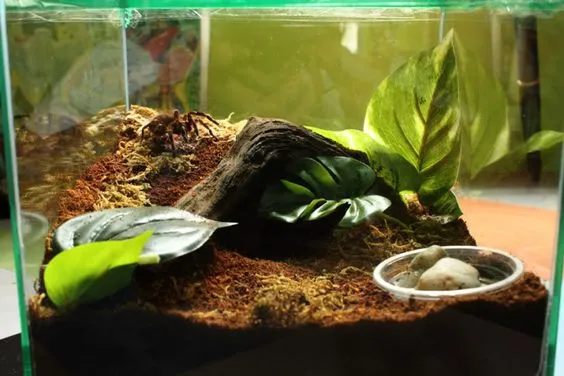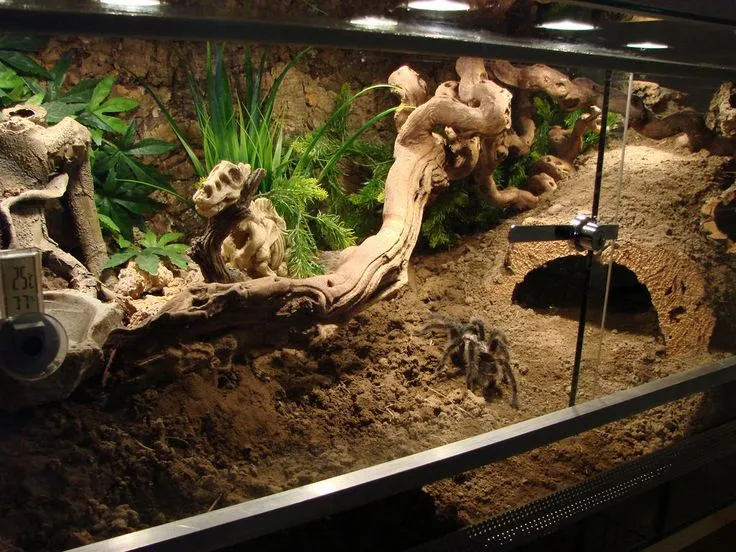Tarantula Habitats Unveiled
Tarantulas, those fascinating and often misunderstood creatures, are found in a diverse array of habitats across the globe. Understanding their natural environments is key to appreciating these spiders and conserving them. From the humid rainforests to the arid deserts, tarantulas have adapted to thrive in various conditions. Their habitat preferences are as diverse as the species themselves, showcasing remarkable evolutionary adaptations. This article delves into the amazing world of tarantula habitats, exploring where these spiders live and the challenges they face.
The Diverse World of Tarantulas
The tarantula family encompasses a wide variety of species, each with its own specific habitat preferences. These spiders are not limited to a single type of environment; instead, they have evolved to occupy a range of niches. Factors such as climate, vegetation, and the availability of prey all influence where a tarantula species will choose to live. Some are terrestrial, living on the ground, while others are arboreal, spending their lives in trees. These varied lifestyles reflect the adaptability and resilience of these arachnids.
Terrestrial Habitats

Terrestrial tarantulas are those that primarily live on the ground. They are often found in environments with loose soil, leaf litter, and plenty of hiding places. These habitats offer protection from predators and provide opportunities for ambush hunting. The specific characteristics of terrestrial habitats vary depending on the species and its geographic location, but they all share the commonality of providing a ground-level environment for the tarantula to thrive.
Burrowing Tarantulas
Many terrestrial tarantulas are burrowers. They dig elaborate tunnels in the ground, which serve as both homes and hunting grounds. The burrows provide a stable microclimate, protecting the spiders from extreme temperatures and dehydration. Burrowing behavior is particularly common in arid and semi-arid regions, where the burrows offer a refuge from the harsh desert conditions. The size and complexity of the burrows can vary depending on the tarantula species and the type of soil.
Forest Floor Dwellers
Other terrestrial tarantulas prefer to live among the leaf litter and debris on the forest floor. These spiders rely on camouflage and ambush tactics to capture their prey. The forest floor provides a rich environment filled with insects and other invertebrates, making it an ideal hunting ground. The moist conditions and ample hiding places offer protection from both predators and the elements. The abundance of organic matter also supports a thriving ecosystem, which indirectly benefits the tarantulas.
Arboreal Habitats

Arboreal tarantulas, in contrast to their terrestrial counterparts, live primarily in trees. They have adapted to climb and live among the branches, utilizing the vertical space for both shelter and hunting. Arboreal habitats often provide a different set of challenges and opportunities compared to terrestrial environments, influencing the tarantula’s behavior and morphology. Their ability to climb and navigate the trees is a key adaptation for survival.
Rainforest Tarantulas
Rainforests are home to many arboreal tarantula species. The dense vegetation and high humidity of rainforests provide ideal conditions for these spiders. They often construct their webs or burrows in the trunks of trees, taking advantage of the abundant insects and other small animals that inhabit the rainforest canopy. The camouflage provided by the rainforest environment further aids in their hunting strategies. These tarantulas contribute to the biodiversity of their lush homes.
Desert Tarantulas
Although often associated with rainforests, some arboreal tarantulas have adapted to desert environments, albeit a rarer occurrence. These tarantulas have evolved to withstand the harsh conditions of the desert, including extreme temperatures and scarce water. They typically seek shelter in crevices, under rocks, or within cacti, where they can find some protection from the sun and wind. Their survival in these arid environments demonstrates their remarkable resilience and adaptability.
Top 5 Amazing Tarantula Habitats

Fact 1 North American Habitats
North America hosts a variety of tarantula species, primarily found in the southwestern United States. These tarantulas often inhabit arid and semi-arid environments, including deserts, grasslands, and scrublands. They are typically terrestrial burrowers, constructing intricate tunnels in the sandy soil. The availability of insects and other invertebrates forms the basis of their diet. Their presence highlights the diversity of life in these seemingly harsh environments.
Fact 2 South American Habitats
South America boasts a rich diversity of tarantula species, with habitats ranging from rainforests to savannas. Many species are arboreal, inhabiting trees and shrubs. The humid rainforests of the Amazon basin provide an ideal environment for these spiders, with abundant prey and suitable shelter. The variation in climate and vegetation across South America has fostered a wide array of tarantula adaptations.
Fact 3 African Habitats

Africa is home to a diverse range of tarantula habitats, from the dry savannas to the humid rainforests of the Congo basin. Many African tarantulas are terrestrial burrowers, adapted to the seasonal changes in temperature and rainfall. The availability of food resources, coupled with the specific environmental conditions, has shaped the evolution of these spiders. Their presence underscores the continent’s rich biodiversity.
Fact 4 Asian Habitats
Asia’s tarantula habitats vary widely, encompassing tropical rainforests, subtropical forests, and even arid regions. Some species are arboreal, found in the canopies of tall trees, while others are terrestrial, constructing burrows in the forest floor. The diverse climates and terrains of Asia have resulted in a fascinating array of tarantula adaptations. The threats to their survival include habitat loss and the illegal pet trade.
Fact 5 Australian Habitats
Australia’s tarantulas are found in a variety of habitats, including rainforests, woodlands, and deserts. Some species are known for their impressive size and unique adaptations. The diverse Australian landscape, with its variations in temperature and rainfall, has fostered a wide array of tarantula species. Their presence contributes significantly to the continent’s unique ecosystem.
Threats to Tarantula Habitats

Habitat Destruction
Habitat destruction is one of the primary threats to tarantulas worldwide. Deforestation, urbanization, and agricultural expansion all contribute to the loss of their natural environments. As their habitats are destroyed, tarantulas are forced to compete for limited resources or face displacement. This habitat loss is a serious concern for the survival of numerous tarantula species, highlighting the urgency of conservation efforts.
Climate Change Impact
Climate change poses a significant threat to tarantula habitats. Rising temperatures, altered rainfall patterns, and increased frequency of extreme weather events can disrupt their ecosystems. Changes in temperature and humidity can directly affect the tarantula’s ability to survive and reproduce. The impact of climate change emphasizes the importance of understanding and mitigating its effects to protect these fascinating creatures.
Conservation Efforts

Conservation efforts are crucial to protecting tarantula habitats and ensuring the survival of these spiders. These efforts include habitat preservation, sustainable land management, and promoting responsible pet ownership. Supporting conservation organizations and raising awareness among the public can make a difference in protecting these remarkable creatures. Educating the public about tarantulas and their habitats is vital to foster appreciation and support conservation efforts.
In conclusion, tarantula habitats are as diverse and fascinating as the spiders themselves. Understanding these habitats is essential for appreciating these creatures and implementing effective conservation strategies. By protecting their natural environments, we contribute to preserving the biodiversity of our planet and ensuring that future generations can continue to marvel at these amazing arachnids.
